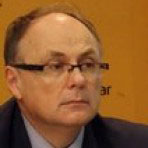
"Structural changes present a central element of the process of development and a critical element of the growth model, they can hamper growth if slow or inefficient, but they can also bolster growth if resource allocation gets improved" (Simon Kuznets, 1957).
Several strong waves of recession swept over the entire territory of Southeast Europe (SEE) growing rapidly in intensity, and washed ashore all consequences of the applied transition model. "Debt based economy" is taking its toll on all dimensions of development, from demographic regression, through industrial devastation, educational gaps, and institutional incapacity. Understandably, the most burdensome are those transitional effects that are related to the key resource of progress, the resource that is most difficult to regenerate, the human capital.
Transformation of the economic structure of the SEE unfolds slowly and selectively. The reform mechanisms are entering a delicate phase, facing new challenges. As of yet, the EU integration processes of most SEE countries have not been completed. Macro-economic risks of growth sustainability are escalating, while unemployment rates are rising. Economic disproportions between the SEE states and the EU are becoming ever greater. When compared to the Union’s average, standards of living in the Region are three times lower (GDP PPS), whereas levels of unemployment are three times higher. Regional and social cohesion in Europe is weakening and the SEE nations are increasingly often being confronted by different shapes of poverty and backwardness. The fact that 10% of the population produces only 2.3% of the EU’s GDP reveals that the states of SEE started to resembel the Group’s periphery.
Effects of the applied model of social and economic transformation in the SEE countries, lasting over two decades, have neither contributed to their economic progress, nor helped their economic systems to adapt to more vigorous competition and its high standards. International barometer of competitiveness ranks the whole SEE region very low - at the tail of its list. For years, the SEE nations have been fighting brain drain. The most critical areas of competitiveness in the SEE encompass Institutions, Business Compliance and Innovations.
Albeit the reasons for that are numerous, the primary ones include delayed pre-transition start and slow, selective and unfinished structural reforms. Unlike the SEE states, more successful transitional economies experienced more dynamic economic growth in the second half of the 1990s, mainly thanks to the transformation of their industries to drive greater export of goods and services. Industrial reformations increased their competitiveness and resulted in exceptionally energetic development of such industrial branches based on modern technologies and economies of scale. Naturaly, the EU market (geographic location, comparative advantages, or relocations of operations) played a vital role in the process of enhancing export performance. However, industrial advantages of the transitional economies reflected in those industrial fields which required qualified, but at the same time, cheaper and more productive work force.
All of the SEE countries will in the upcoming future encounter following trends and constraints which will have a direct impact on the success of transforming their growth and development models:
- "Legacy of debt" as the central problem in SEE for a longer period of time;
- Differential vulnerability to external shocks due to accumulation of imbalances;
- Poorer FDI flow into the Region
- Limited effectiveness of monetary policies
- Inflexible labour markets
- Narrow capacities for export
- Less possibilities to rely on international flow of capital
- Necessity to create a model of growth founded on domestic savings and investments
- Stronger agglomeration trends in the manufacturing industry
- The EU´s focus directed at the development of industrial policies
- More stringent regulations and interventions on the financial market.
Sustainable development in SEE, Serbia especially, will primarily depend on the transforming models of growth and development, or structural reforms respectively. “Structural changes present a central element of the process of development and a critical element of the growth model, they can hamper growth if slow or inefficient, but they can also bolster growth if resource allocation gets improved.” Significant structural reforms still remain to be implemented, as the priorities lie within the completion of privatization and restructuring of enterprises, as well as enhancement of business conditions. Transformation of state-owned public firms is just commencing.
Structural changes should be specifically directed at: micro-economic balance of domestic demand and production with fiscal consolidation; acceleration of structural reorganization and institution building; and, elevation of national competitiveness through educational reforms, expansion of entrepreneurship, and higher level of regional solidarity. These structural transformations are of crucial importance. On one hand, they allow for reallocation of means to more productive sectors of the economy and, on the other, they create opportunities for establishment of new companies and development of the entrepreneurial sector, which is the mainstay of growth in modern market economies. Such advences should stimulate redistribution of resources from the public and government to the private sector in order to create new economic structures through the process of economic restructuring and modernization.
Edvard Jakopin
The Director of the Serbian National Institute for Development from 2001 to 2011

 Author:
Author:





